The Prague Astronomical Clock, or Prague Orloj is a medieval astronomical clock located in Prague, the capital of the Czech Republic.
The clock was first installed in 1410, making it the third-oldest astronomical clock in the world and the oldest clock still operating.
The clock mechanism has three main components — the astronomical dial, representing the position of the Sun and Moon in the sky and displaying various astronomical details; statues of various Catholic saints stand on either side of the clock; “The Walk of the Apostles”, a clockwork hourly show of figures of the Apostles and other moving sculptures, notably a figure of a skeleton, representing Death, striking the time; and a calendar dial with medallions representing the months.
The astronomical dial is a form of mechanical astrolabe, a device used in medieval astronomy. Alternatively, one may consider the Orloj to be a primitive planetarium, displaying the current state of the universe.
The astronomical dial has a background that represents the standing Earth and sky, and surrounding it operate four main moving components: the zodiacal ring, an outer rotating ring, an icon representing the Sun, and an icon representing the Moon.
The background represents the Earth and the local view of the sky. The blue circle directly in the centre represents the Earth, and the upper blue is the portion of the sky which is above the horizon. The red and black areas indicate portions of the sky below the horizon. During the daytime, the Sun sits over the blue part of the background and at night it sits over the black. During dawn or dusk, the mechanical sun is positioned over the red part of the background.
Written on the eastern (left) part of the horizon is aurora (dawn in Latin) and ortus (rising). On the western (right) part is occasus (sunset), and crepusculum (twilight).
Golden Roman numerals at the outer edge of blue circle are the timescale of a normal 24-hour day and indicate time in local Prague time, or Central European Time. Curved golden lines dividing the blue part of dial into 12 parts are marks for unequal “hours”. These hours are defined as 1/12 of the time between sunrise and sunset, and vary as the days grow longer or shorter during the year.
Inside the large black outer circle lies another movable circle marked with the signs of the zodiac which indicates the location of the Sun on the ecliptic. The signs are shown in anticlockwise order. In the photograph accompanying this section, the Sun is currently moving anticlockwise from Cancer into Leo.
The displacement of the zodiac circle results from the use of a stereographic projection of the ecliptic plane using the North pole as the basis of the projection. This is commonly seen in astronomical clocks of the period.
The small golden star shows the position of the vernal equinox, and sidereal time can be read on the scale with golden Roman numerals. The zodiac is on the 366-tooth gear inside the machine. This gear is connected to the sun gear and the moon gear by a 24-tooth gear.
The golden Sun moves around the zodiacal circle, thus showing its position on the ecliptic. The sun is attached to an arm with a golden hand, and together they show the time in three different ways:
The position of the golden hand over the Roman numerals on the background indicates the time in local Prague time.
The position of the Sun over the curved golden lines indicates the time in unequal hours.
The position of the golden hand over the outer ring indicates the hours passed after sunset in Old Czech Time.
Additionally, the distance of the Sun from the center of the dial shows the time of sunrise and sunset. The Sun and its hand are on the 365-tooth gear inside the machine.
The movement of the Moon on the ecliptic is shown similarly to that of the Sun, although the speed is much faster, due to the Moon’s orbit around the Earth. The Moon’s arm is on the 379-tooth gear inside the clock machine.
The half-silvered, half-black sphere of the moon also shows the Lunar phase. The Moon has a 57-tooth gear inside its sphere, and is slowly rotated by a screw-thread attached to a weight, advancing two teeth per day. This movement, powered only by gravity, makes the Orloj unique in the world among astronomical clocks showing the phases of the Moon. The mechanism was created by an unknown maker, probably in the mid-17th century. Unlike the original device, the construction of which was described in a report from 1570, this mechanism produces much smaller deviation from the actual lunar phase of about one day in five years.
The four figures flanking the clock are set in motion on the hour, and represent four things that were despised at the time of the clock’s making. From left to right in the photographs, the first is Vanity, represented by a figure admiring himself in a mirror. Next, the miser holding a bag of gold represents greed or usury. Across the clock stands Death, a skeleton that strikes the time upon the hour. Finally, there is a figure representing lust and earthly pleasures. On the hour, the skeleton rings the bell and immediately all other figures shake their heads side to side, signifying their unreadiness “to go”.
Every hour of the day, twelve statues of Apostles with its attributes appear at the doorways above the clock. The Apostles appear in the left and right windows of the astronomical clock as viewed from the square in this order: James and Peter, Andrew and Matthias, Thaddeus and Philip, Thomas and Paul, John and Simon, Barnabas and Bartholomew.

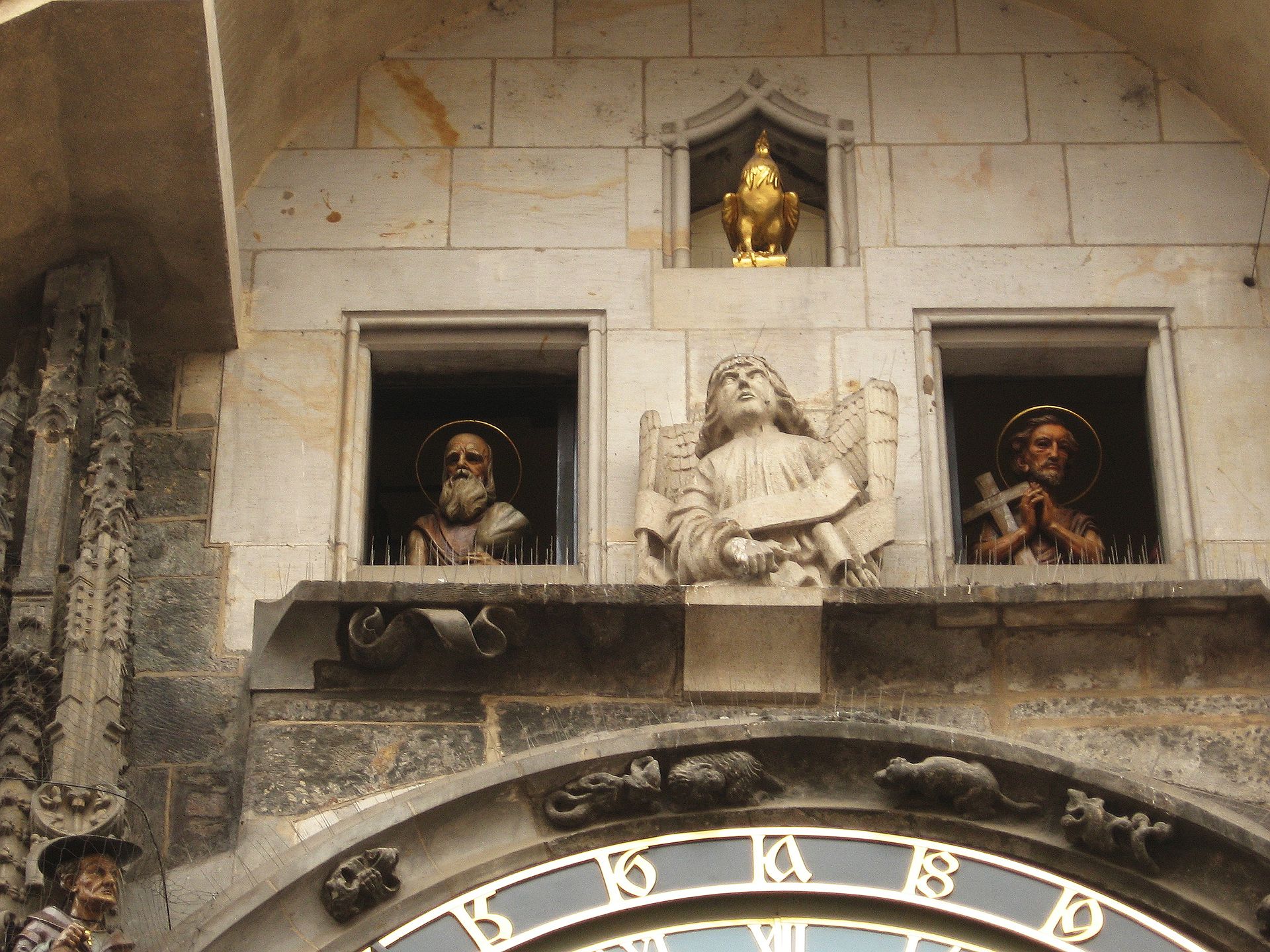
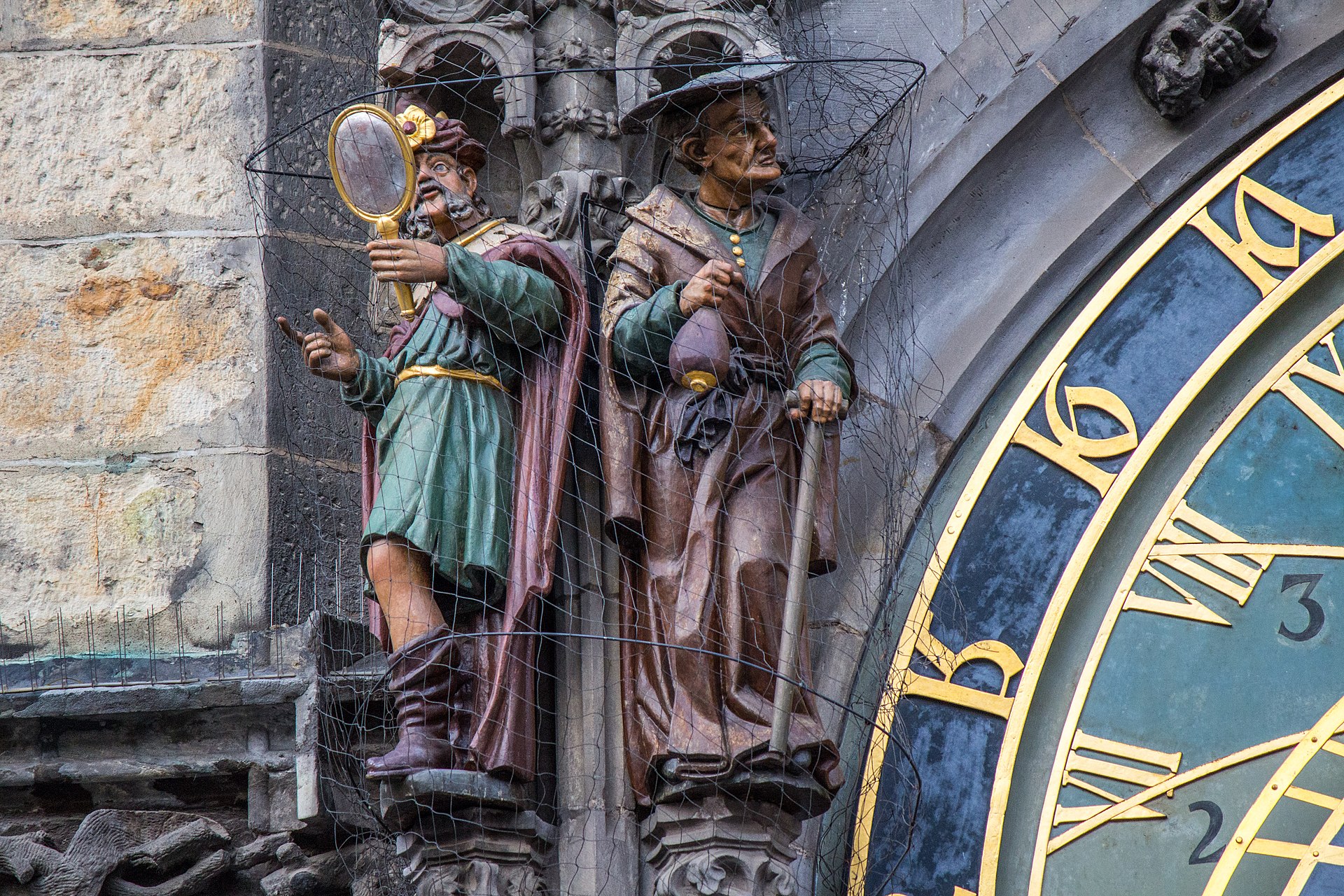

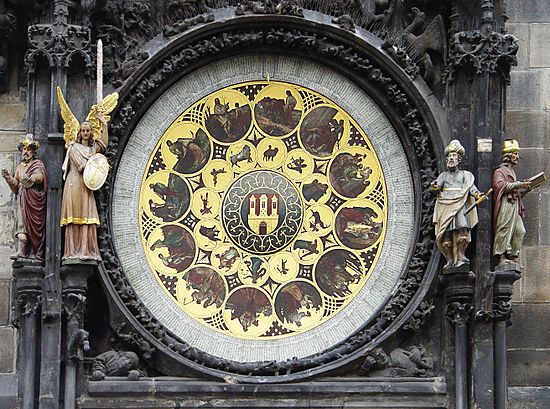
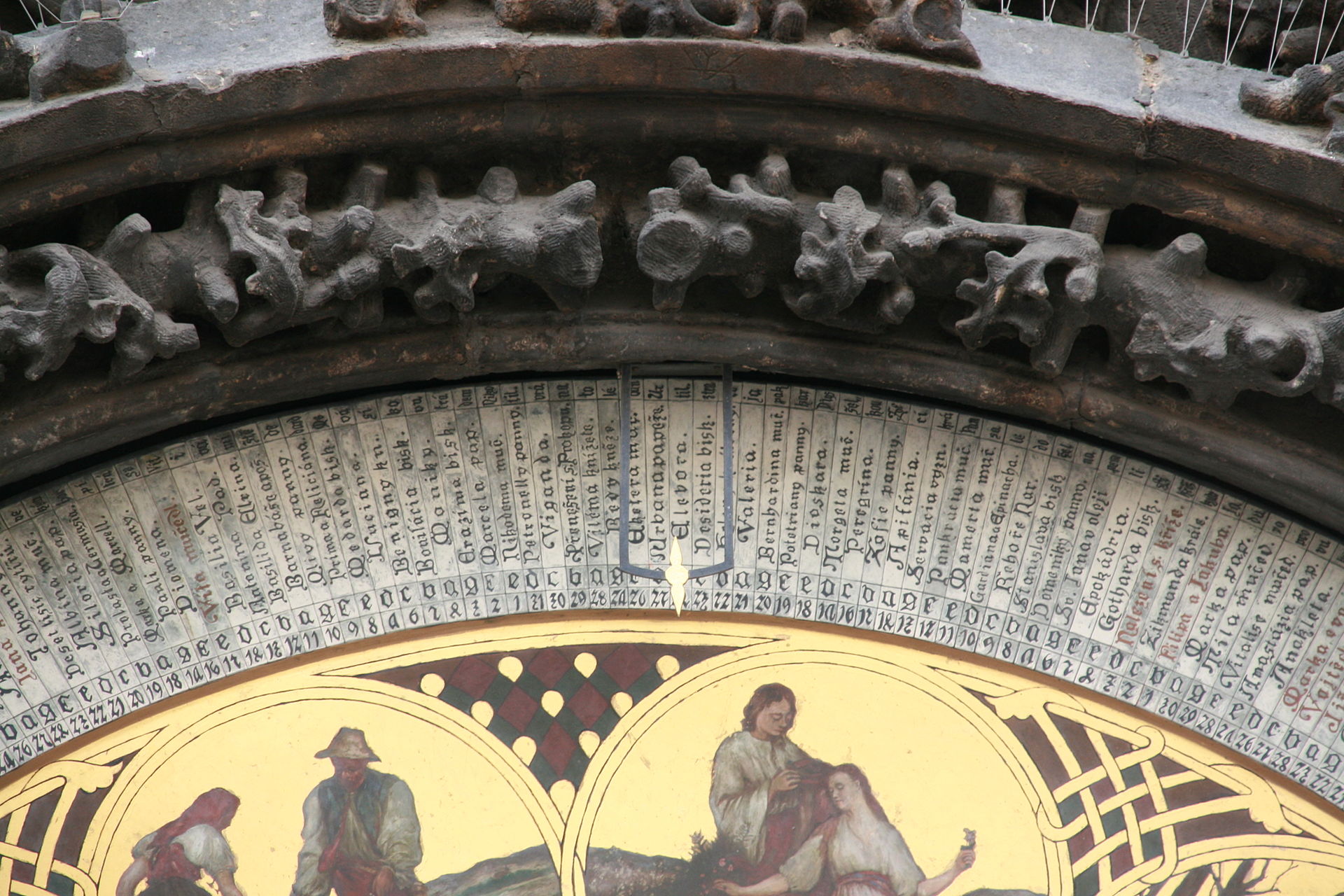
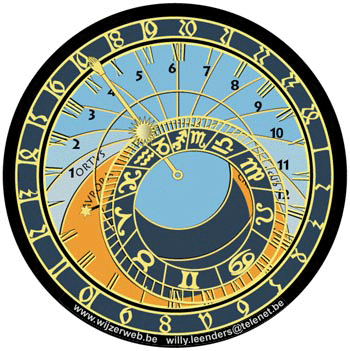
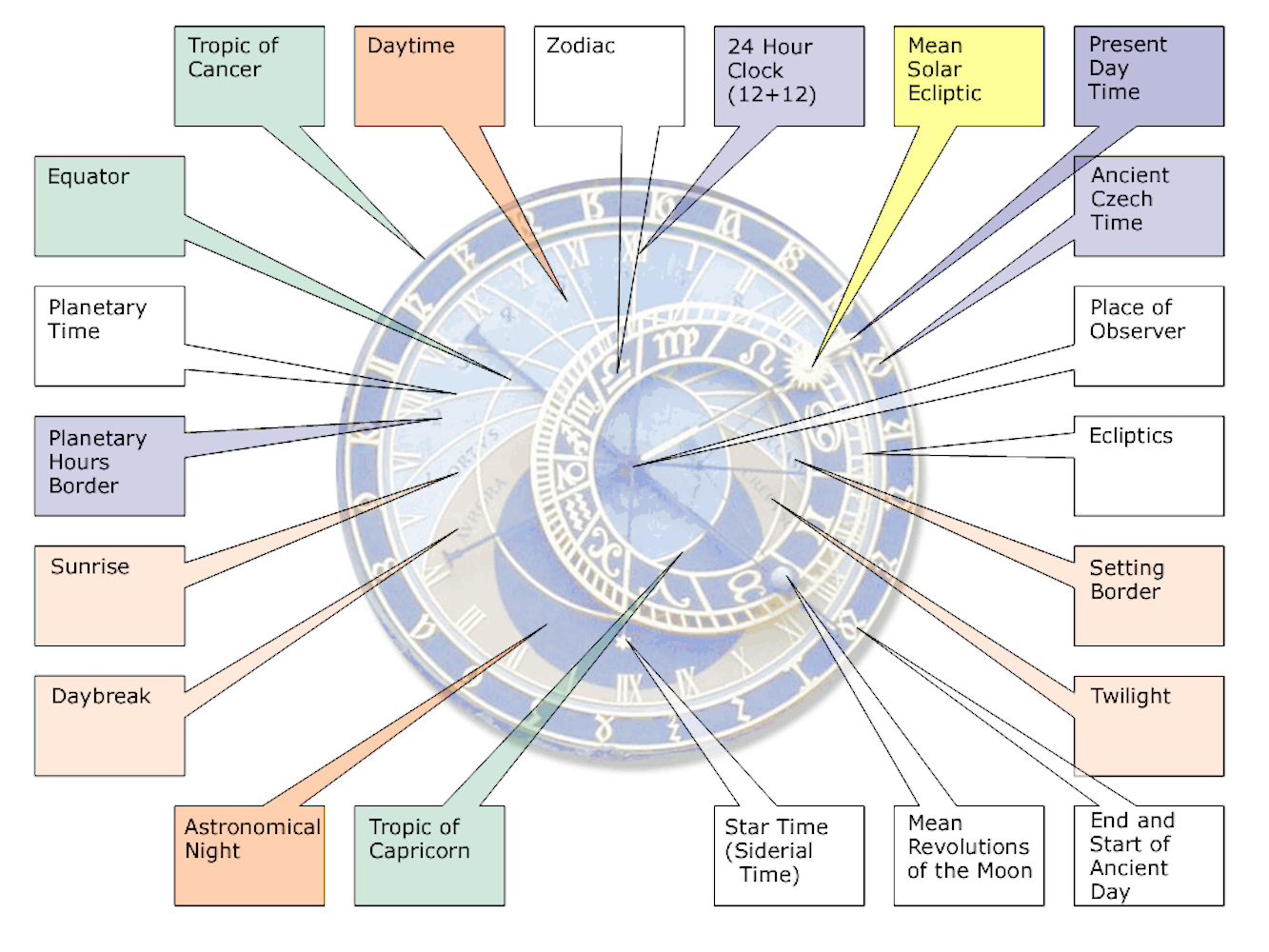
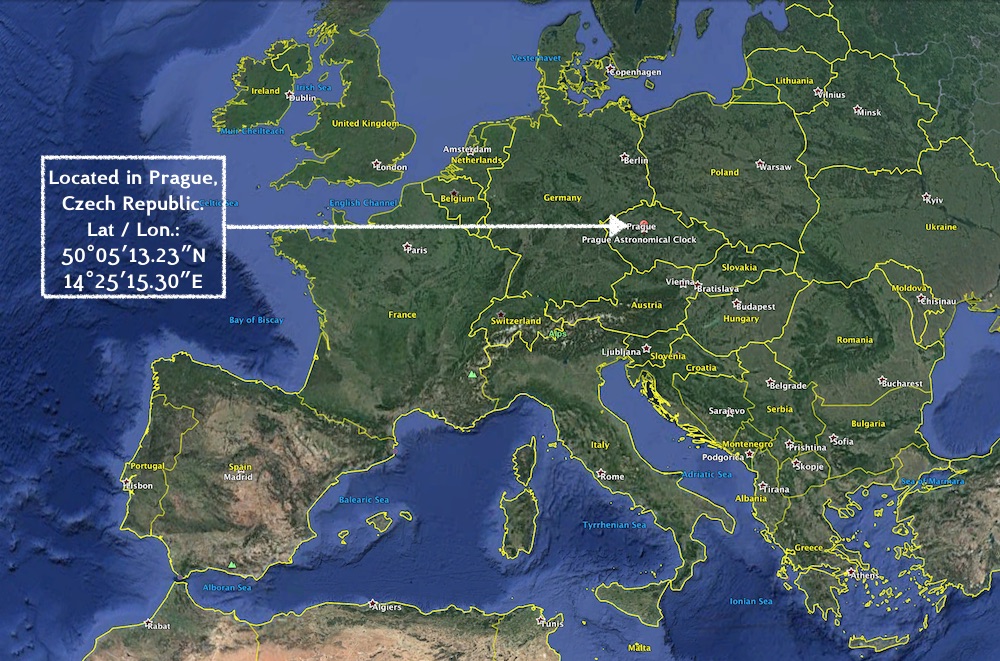
Would you like to share your thoughts?
Your email address will not be published. Required fields are marked *